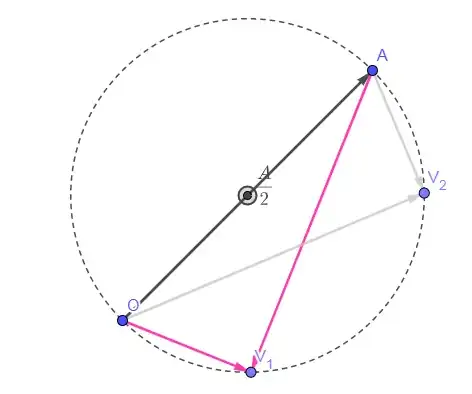Fix $a$ in $\mathbb R^2$. What is the locus of points $\{v : v \in \mathbb R^2$ and $v \cdot (v-a) = 0\}$?
Clearly, $0$ and $a$ are in this set, and no other multiple of $a$ is in the set. Beyond that, I'm having trouble characterizing it.
Update
Let $a = (p, q)$. Then:
$$x^2 + y^2 - px - qy = 0\\ (x - \frac{p}{2})^2 + (y - \frac{q}{2})^2 = r^2$$ where $r = \frac {\sqrt {p^2 + q^2}} 2.$ That is, a circle with center $a/2$ and radius $\|a\|/2$. Wow.
This obviously implies that $$(v−a/2)⋅(v−a/2)=a/2⋅a/2$$ defines the same circle, which makes sense, because the equation is stating: Take $v$, shift it by $a/2$, and its length squared must equal a constant (namely the length of $a/2$ squared).
I'm still struggling to "see" this in the original equation $v \cdot (v-2b) = 0$. Does it mean that the locus of points, that when translated by a constant have vectors orthogonal to the midpoint of the translation vector, is a circle? I can't (yet) see that geometrically.
Update
It's Thales' Theorem: If $a/2$ is the center, then $OA$ is a diameter, and $OV \perp AV$ for any $V$ on the circle:

Or, to put it differently: For any two distinct points $O, A$, a circle is the locus of points $V$ such that $OV \perp AV$. Then $OA$ is a diameter and $A/2$ the center.
